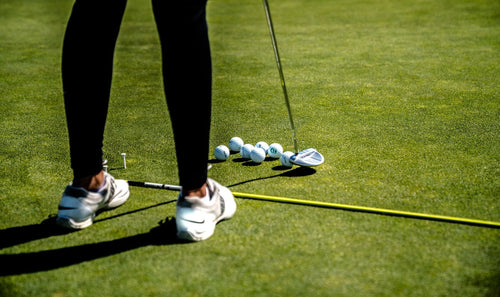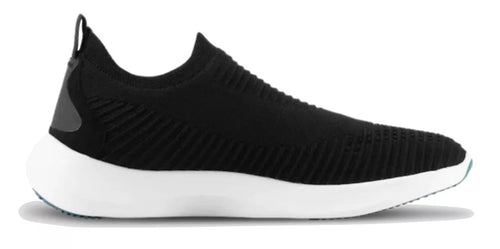So you want to find the perfect running shoes but don’t know where to start? Be warned: this is not a simple endeavor!
These days, it’s all about lightweight running shoes with minimalist designs. The conjecture is that lighter shoes will increase the overall efficiency.
Unfortunately, this is not enough to find the perfect fit. The fact of the matter is, there are many things to consider before you can make an informed purchase.
In this article, we provide a super in-depth step by step guide to picking the right running shoes for you.
Step 1- Understand Your Foot Anatomy and Observe How you Run

This is the most crucial and oftentimes most confusing step for even the most experienced runners.
Everyone’s feet are built differently, which means that everyone has varying natural and preferred running styles. So, a running shoe that fits someone else perfectly might not work as well for you.
There are three major things you need to consider here: pronation, foot arch, and strike preference.
Pronation and Foot Arch
Pronation refers to the reactionary movement of your foot upon impact with the ground. More specifically, it is the way that your ankle either rolls inwards or outwards to compensate for the impact. There are three types of pronation:
- Supination
- Overpronation
- Neutral pronation
The foot arch is the degree of concavity of the bottom of your feet. Some people have a very high arch, while others may have a low or almost non-existent arch. The foot arch is the main factor that determines your pronation type.
So, how does it all connect?
Well, whenever your feet hit the ground as you’re running, your foot arch collapses as a natural mechanism for shock-absorption. Depending on how much it collapses, your ankle will roll inwards or outwards accordingly.

Basically, feet with a high arch will collapse excessively, causing the ankle to roll inwards. This is known as overpronation. Unfortunately, overpronation can be very uncomfortable and even painful for frequent runners.
On the other hand, if you have a low arch, your ankle will react by leaning a little bit outwards. This is known as supination, which usually isn’t too bothersome.
Lastly, if you have a relatively flat arch, your ankle will neither roll inwards or outwards. This is a neutral position, and it makes running very easy.
Remember: you can’t control the way your foot and ankle move. It is something that you will have to work around.
How to Check Pronation
There are two ways that you can check your pronation. The first one is a little elementary and not too reliable:
- First, take an old running shoe and examine the outsole.
- If the outer edge is more worn out, this means that you tend to supinate.
- Contrastingly, if the inner edge is more worn out, then you probably tend to overpronate as you run.
A more surefire way to determine your pronation is through the “wet foot test”:
- Wet your feet thoroughly and stand on sandpaper for about 10 seconds.
- Observe the print that your feet leave behind.
- If the print shows the entirety of your foot, then you have a neutral foot arch.
- If your foot's imprint shows a distinct curve, you have a normal foot arch, and you will tend to supinate.
- Or if the imprint has a very sharp curve and there is only a small band connecting the heels and toes, then you have a very high foot arch.
Strike Preference
Strike preference refers to the landing position of your feet. Forefoot striking is when you land on the balls of your feet. Conversely, heel strike is when you land on your heels first and then roll to your toes to launch.

Resilience is key for either strike preference. This is why flexible, lightweight running shoes such as Loom Sneakers are highly preferred for running.
Step 2: Identify Your Goal(s) and Purpose(s)
Knowing your goal and running schedule will further help you narrow down your search for the perfect running shoes.
Firstly, you will have to determine whether you’re aiming for speed or distance. If your goal is to maximize your speed over shorter distances, then you’ll need lightweight running shoes with responsive mechanisms.
On the other hand, if your aim is to cover longer distances at a steady pace, then you should focus on shoe durability and stability.
At the same time, you also need to know how you’ll be using your shoe. For instance, if you need running shoes for training, then you’ll be wearing them every day for hours on end.
This means that you’ll probably wear them down quicker, in which case you might want more than one pair.

Additionally, if you’re in the same pair of shoes for hours at a time, you’ll want to make sure that the shoes have adequate airflow. Otherwise, you’ll be vulnerable to health issues such as athlete’s foot or nail fungus.
Yet another thing to consider is the terrain or running surface that you’ll encounter. If you’re running on training tracks or hard-paved roads, then you’ll need something with a lot of cushioning.
If instead, you're going for a trail or hike run, then you’ll need waterproof running shoes with extra traction.
In real life, it’s not as clear-cut as having distinct goals or traversing only a specific kind of terrain.

Unfortunately, only a few brands out there, such as Loom, will truly provide 100% waterproof, lightweight running shoes suitable for all terrains. However, don’t place all your bets on finding an all-in-one shoe so easily.
So, try picking a top-three checklist that will accommodate most of your goals.
Step 3 - Understand Shoe Anatomy and Learn the Terminologies

Now that you know your gait and pronation, it’s important to understand which running shoe features will best accommodate you. But first, you need to know what these features are.
Don’t worry; you don’t have to be well-versed in shoe terminologies. But if you want to know what to look out for to accommodate your running style, it is extremely helpful to know the following terms:
Main Shoe Terms
- Heel-toe drop. This refers to the difference between the vertical height of your heel and forefoot, given in millimeters. Most shoes have a heel to toe drop of 6-12mm. The higher this number is, the more cushioning is in the heels as compared to the forefront.

- Outer/Upper. This refers to the material of the shoe. Most running shoes are built from breathable knit Polyester or Nylon Mesh. Running shoes with any leather enforcements are not a good option since the leather can be easily damaged by water.
- The insole is the innermost lining of the shoe that your foot makes contact with. A good insole compliments the arch of your foot perfectly. If you have an especially high foot arch, then the insole can provide an extra bit of support and stability to your feet.
- The outsole is the outermost part of the shoe that makes contact with the ground. This is the part of the shoe that constitutes the traction factor and overall grip of your shoe.
- This is a general term that refers to the shock-absorbing mechanisms of the shoes. Different running shoes boast different cushioning technologies. For competitive running or trekking, extra cushioning is a must.
- Toe box. This is the front-most portion of the shoe that covers your toes and provides the most protection. When it comes to running, the toe box should have enough space so that you can wiggle your toes around freely. Additionally, the tip of your toes should not be in contact with the shoe.
Knowing all these terms will ease you into the next step, that is, identifying the right shoe for you.
Step 4: Make a Checklist and Choose the Right Shoe
If you’ve been keeping up, you should now have a clear idea of the features that you’re after. As a general rule of thumb, we recommend that lightweightedness, water-resistance, and flexibility are standard requirements regardless of the goals, gait, or ground.

Now that that's out of the way, the first thing that you need is to decide on a general category of running shoes.
There are three main types of running shoes. Each shoe corresponds to the pronation tendencies of your gait:
- Stability Shoes: These have a noticeable curve on the insoles that will align perfectly with the contours of a higher arch. This provides stability to your feet as your ankles roll inwards. Hence, these shoes are perfect for overpronation.
- Motion Control Shoes: These shoes are flat and wide with almost no built-in arch.
- Neutral Shoes: These shoes have a slight arch to them.
Next, go ahead and make a checklist of all the features that you require in your running shoes.
Say that you have a high foot arch, heel strike preference, and run on rugged terrains. In this case, your checklist should include high stability, high heel-toe drop, and sufficient cushioning.
Chances are, you won’t be able to find any single pair of running shoes that checks all your boxes. But trust us, there is a perfect running shoe out there for you.
Step 5: Shop In-Person/Do Your Research
The only thing left to do now is to purchase the shoes. Remember, it is always best to shop in person and try the shoe on for size. This will also help you consult with specialists and get an expert opinion.
Even if you can’t physically go to the store, you can always find all the relevant information on the store’s website. In this case, make sure that you read as many reviews as you can, and you should be good to go.
Conclusion
As you can see, choosing the right running shoe is no simple task. However, once you know exactly what you need, then shoe shopping is actually quite fun.
Just keep in mind that lightweight, flexible, waterproof shoes are the foundation for any good running shoe.


























